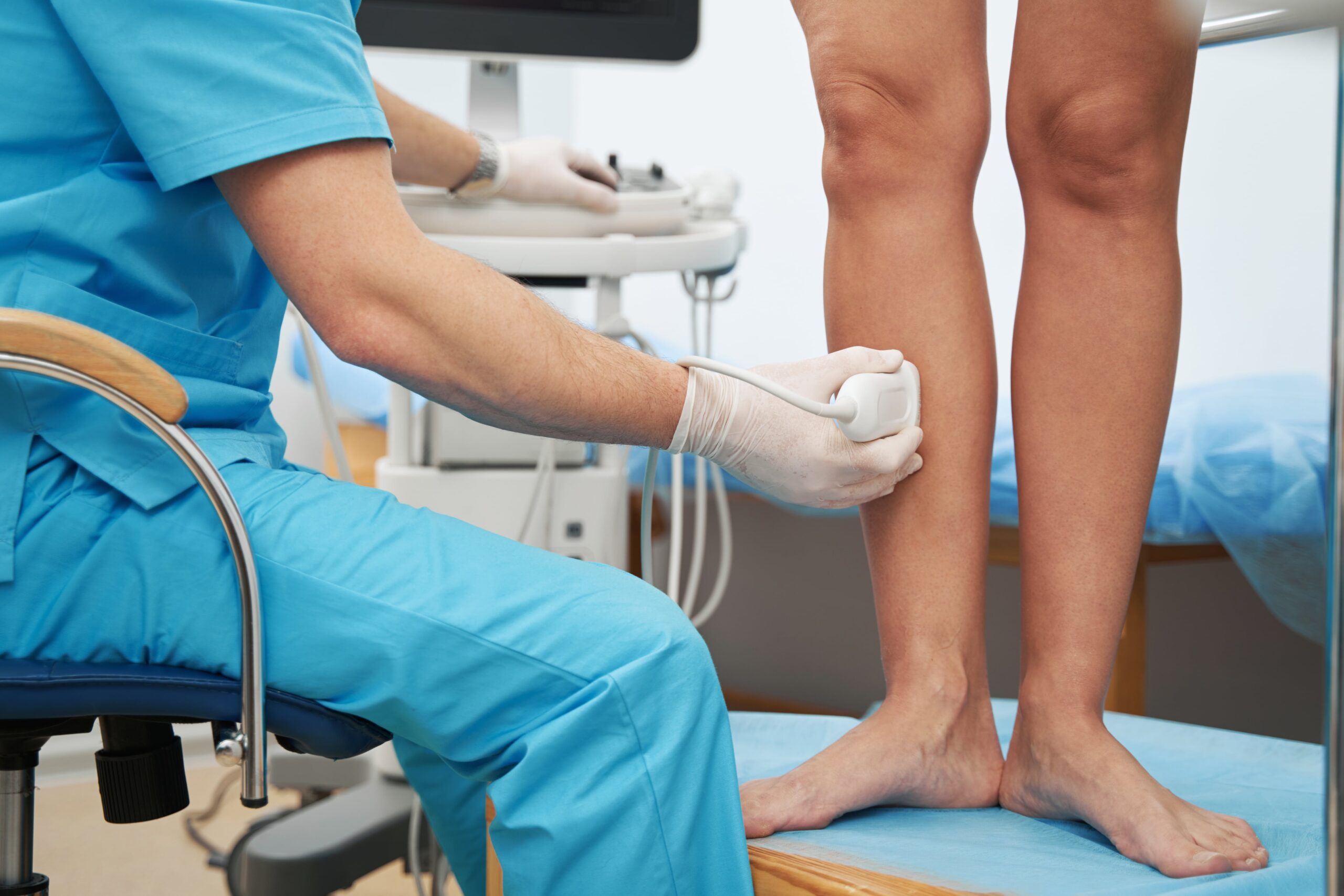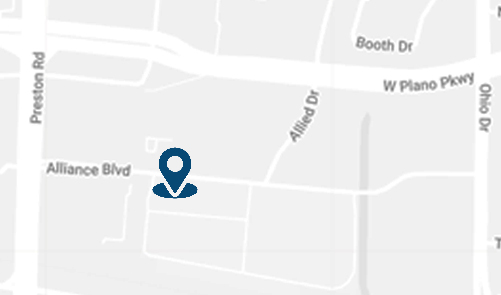By: Dr. Dev Batra | 08.22.25
If every step sends sharp or stabbing pain through your heel, it can quickly limit how much you move. Plantar fasciitis is a leading cause of heel pain in adults, and for many, it can make simple things like walking, working, or exercising feel impossible.
Stretching, orthotics, and injections may help for a while, but the pain often returns. Foot surgery can be an option, but it requires a long recovery and isn’t right for everyone.
That’s why more patients are exploring Plantar Fasciitis Embolization (PFE) – a minimally invasive procedure designed to target the source of inflammation and provide lasting relief.
Understanding Plantar Fasciitis: Causes and Symptoms
Plantar fasciitis develops when the plantar fascia (the thick band of tissue running along the bottom of your foot) becomes irritated or inflamed.
Common causes include:
- Repetitive stress from walking, running, or standing for long periods
- Microtears in the fascia
- Added pressure from weight gain
- Foot shape, like flat feet or high arches
- Walking patterns that put extra strain on the heel
Typical symptoms:
- Sharp, stabbing heel pain (often worse first thing in the morning)
- Pain after long periods of standing or walking
- Tenderness or swelling along the bottom of the foot

Living with these symptoms can make it hard to stay active or get through a normal workday without discomfort.
Why Conventional Treatments Aren’t Always Enough
For most people, treatment begins with non-surgical options like:
- Stretching and physical therapy
- Orthotic shoe inserts
- Ice therapy
- Steroid injections
While these can help, they often provide only temporary relief. Injections wear off, and surgery – while effective for some – comes with a lengthy recovery and the risk of complications.
For those who want a more targeted, less disruptive option, PFE offers another path forward.
What Is Plantar Fasciitis Embolization (PFE)?
PFE is performed by an interventional radiologist – a physician who specializes in image-guided, minimally invasive treatments.
Here’s how it works:
- A small pinhole entry is made in the wrist or upper leg.
- Using advanced imaging, the doctor threads a thin catheter through the blood vessels to those supplying the inflamed plantar fascia.
- Microscopic particles are injected to slow excess blood flow to the irritated tissue.
- This reduced circulation eases inflammation and pain – without large incisions or surgery on the foot.
Benefits of PFE Compared to Surgery or Injections
Patients often choose PFE because it offers:
- No large incisions
- Quick recovery and minimal downtime
- Outpatient treatment in a comfortable setting
- Evidence-based results for reducing chronic heel pain
- A solution for patients who haven’t improved with other treatments
In recent studies, PFE patients reported significant pain reduction within months, with continued improvement over the first year.

What to Expect During and After the Procedure
During PFE, local anesthesia is used to keep you comfortable. The doctor inserts a small catheter through the groin or wrist and uses imaging to guide it precisely to the treatment area. The procedure is typically completed in less than an hour.
Most patients go home the same day and can return to normal activities within a few days. Pain relief often begins within weeks and continues to improve over time as the inflammation in the plantar fascia decreases.
Is PFE Right for You?
You may be a good candidate for PFE if you:
- Have had heel pain for 6 months or more
- Have tried stretches, orthotics, or injections without lasting relief
- Want a non-surgical option with a shorter recovery time
Our team can evaluate your condition and help you decide if PFE is the right choice. Learn more about what to expect during your first visit.
Frequently Asked Questions
Does PFE hurt?
No – PFE is a comfortable, outpatient procedure. You’ll be fully awake but numbed in the small area where the catheter is inserted, so you won’t feel pain. Most patients are pleasantly surprised at how easy it is and are able to walk out the same day without discomfort.
How soon will I feel better?
Many patients notice improvement within the first few weeks, with pain relief continuing to build as the inflammation decreases. Because recovery is so quick, you can return to normal activities almost right away.
Is PFE covered by insurance?
In most cases, yes. Most major insurance plans cover PFE for chronic plantar fasciitis when conservative treatments haven’t worked. Our team will confirm your benefits before you schedule so you know exactly what to expect.
Will I need to take time off work?
Most patients return to work and regular activities within a day or two. There are no large incisions, so downtime is minimal, and no hospital stay – you’ll walk in and out same-day.
How long does the relief last?
For most patients, PFE provides long-term improvement. By targeting the source of inflammation, the results often last far longer than injections or temporary treatments.
Take the First Step Towards Relief
You don’t have to live with heel pain that slows you down. At Texas Vascular Institute, our board-certified physicians specialize in advanced, minimally invasive treatments like PFE at our Dallas, Hurst, and Plano locations.
Contact us today to see if Plantar Fasciitis Embolization is right for you.
Read more blogs
Embolization Procedure
Discover embolization procedures for non-surgical relief from knee pain, heel pain, and fibroids. Safe, effective, and fast recovery.
Find Relief Without Surgery
Find relief without surgery at Texas Vascular Institute. Minimally invasive vascular treatments, faster recovery, and compassionate care.
Uterine Fibroid Embolization
Learn how Uterine Fibroid Embolization (UFE) treats fibroids safely without surgery. Discover benefits, recovery, and if it’s right for you.
WHAT OUR PATIENTS
have to say
Texas Vascular Institute always appreciates feedback from our valued patients. To date, we’re thrilled to have collected 378 reviews with an average rating of 5 out of 5 stars. Please read what others are saying about Texas Vascular Institute below, and as always, we would love to collect your feedback.
Leave a Review
Amazing Practice
I'm very particular with my Healthcare and tend to be cautious with referrals to specialists. This office is amazing from the first point of contact. Their staff are friendly, professional and highly knowledgeable. Then the Dr is just as amazing as his staff, absolutely brilliant. Office manager Jessica has this office running like a well oiled machine and does so with a smile, an air of confidence, kindness and professionalism. Love this practice!!
- Richard G.

Beyond Thankful
Dr Batra and his staff are amazing! We are so grateful to have found him. Everyone is so kind and so caring and Dr Batra explains everything so well and does procedures with excellence. Beyond thankful to be under their care!!!
- Bitsy P.

Gold Standard
This is a gold standard for how a medical practice should be run. I was promptly seen at my scheduled time, my ultrasound was thorough and I received plenty of attention and care from the staff and Dr.Batra.
- Weronika L.
INSURANCE
We accept most major insurance plans. Please contact the medical office for all insurance related questions.









8330 Meadow Rd #100
Dallas, TX 75231
For Appointments: 972-798-4710
General Inquiries: 972-646-8346

809 West Harwood Rd, Suite 101,
Hurst, TX 76054
For Appointments: 972-798-4710
General Inquiries: 972-646-8346

4716 Alliance Blvd Suite #180,
Plano, TX 75093
For Appointments: 972-798-4710
General Inquiries: 972-646-8346

